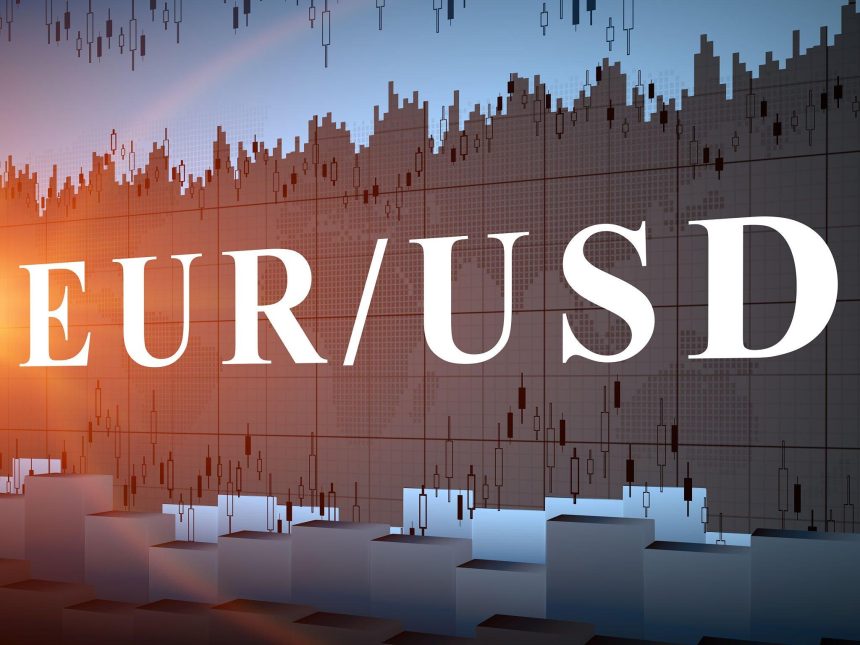The EURUSD pair is trading flat near 1.1615 in Tuesday’s European session, struggling to establish a clear direction after retreating from an intraday high of 1.1660. The market is caught in the crossfire of political drama in the US, heightened uncertainty in the Eurozone, and mixed macroeconomic signals from both sides of the Atlantic.
Trump Targets the Fed Market Confidence Shaken
Financial markets were rattled after President Donald Trump ordered the removal of Federal Reserve Governor Lisa Cook, citing allegations of mortgage fraud in Georgia. However, Cook firmly rejected the order, asserting that the President lacks authority to dismiss her.
This unprecedented political pressure on the Federal Reserve’s independence has fueled volatility in the US Dollar. While traders initially sold the Greenback on fears of institutional instability, short-term bargain hunting and expectations of future monetary easing have kept the Dollar supported.
EURUSD Struggles to Capitalize on Dollar Weakness
Despite the brief softening of the USD, the Euro has failed to mount a meaningful rally. Concerns are mounting over political turmoil in France, where opposition parties have refused to back Prime Minister François Bayrou’s confidence vote on spending cuts. Analysts warn that a government collapse could reignite Eurosceptic narratives, adding pressure to the already fragile Eurozone political landscape.
Adding to the pressure, Trump’s renewed threat of tariffs on countries implementing digital taxes, including the European Union, has dampened sentiment. The President labeled the EU’s Digital Services Act as discriminatory, a move that risks escalating trade tensions between Washington and Brussels.
Dollar Sentiment and Economic Data in Focus
The US Dollar Index (DXY) is showing a moderate bearish tone, but downside is capped as traders eye the Federal Reserve’s potential rate path. While political noise grows, the market still expects at least one rate cut before the end of the year, with hopes that easing monetary policy could offset slowing US growth.
Tuesday’s economic data could shape short-term market direction:
Durable Goods Orders (July): Expected to drop 4% after a sharp 9.3% fall in June, largely driven by weak aircraft orders.
Core Capital Goods Orders: Forecast to rebound by 0.3%, signaling some resilience in business investment.
Consumer Confidence (August): Projected to decline to 96.2 from July’s 97.2, reflecting the impact of softer employment prospects on household sentiment.
These indicators could either support the Greenback if data surprises to the upside or add pressure if economic weakness deepens.
Euro Price Action Against Majors
According to the latest currency heat map, the EURUSD showed strength against the New Zealand Dollar (+0.20%) but remained relatively weak against the Japanese Yen (-0.19%) and US Dollar (-0.04%). This mixed performance underscores the lack of strong directional conviction in Euro trading.
Technical Outlook: EURUSD Neutral Bias
From a technical perspective, EURUSD is consolidating within a tight range between 1.1580 and 1.1670. A decisive break above 1.1670 could open the path toward 1.1720, while a sustained drop below 1.1580 may expose the pair to deeper losses toward the 1.1500 psychological support.
Momentum indicators remain neutral, suggesting that traders are awaiting a clear catalyst either from US economic data or political developments to determine the next trend.
Key Market Drivers Ahead
US Political Pressure on the Fed: Any fresh remarks from Trump or Fed officials could drive significant intraday volatility.
Eurozone Political Stability: French political turmoil remains a risk factor for Euro sentiment.
US Data and Fed Signals: Economic releases and Fed communications will shape expectations for the next policy meeting.
Trade Tensions: Any escalation in tariff rhetoric between the US and EU could weigh on the Euro in the short term.
Conclusion
The EURUSD pair is in a wait-and-see mode, reflecting a tug-of-war between political risks, central bank expectations, and upcoming economic data. Unless the Euro gains support from either a resolution of French political tensions or a sharper pullback in the US Dollar, the pair is likely to remain range-bound in the near term.
For traders, the next 24–48 hours will be critical as the market digests US data releases and potential new developments in the Trump-Fed standoff, which could provide the volatility needed to break the current stalemate.









